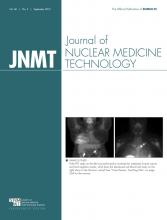Answers to the Questions on Pages 204 and 205
Question 1
Answer = D
A. Incorrect. Potassium analogs, such as 201Tl, are actively transported into cells, for example, myocytes, via the Na-K pump.
B. Incorrect. 67Ga citrate is an iron analog that binds to and is circulated by transferrins, ceruloplasmins, and serum-binding proteins. Ultimately, 67Ga preferentially binds to chelates, such as lactoferrin, which are present in higher concentrations at sites of inflammation and infection.
C. Incorrect. Diphosphonates (e.g., methylene diphosphonate used in bone scans) localize to bone and osteoblast surfaces on the basis of ion exchange.
D. Correct. Heat denaturing of red blood cells converts them into rigid spherocytes, which are then sequestered in the spleen via its normal filtering physiology. Additionally, like 99mTc-colloids, 99mTc-DRBCs are phagocytized by the reticuloendothelial system. However, DRBCs and colloids have different levels of overlapping biodistributions, as is described in the case discussion.
Question 2
Answer = A
CT and MRI are not sensitive or specific in the detection of splenosis due to the broad differential of soft-tissue masses, including the evaluation of pulmonary nodules (e.g., metastases, mesothelioma, lymphoma, invasive thymoma, primary neoplasm, and pleural plaques). 99mTc-DRBCs have a higher ratio of target uptake (splenic tissue) to background uptake, contributing to a higher sensitivity and specificity than are obtained with radiolabeled sulfur colloid scans (1,2).
The continuing education test for “Breast Imaging Devices for Nuclear Medicine,” by Prekeges (J Nucl Med Technol. 2012;40:71–78), contained some errors. The correct test is available on the SNMMI Web site at http://interactive.snmmi.org/index.cfm?PageID=11769. We regret the error.
On page 213 of the article “SNM Practice Guideline for Hepatobiliary Scintigraphy 4.0,” by Tulchinsky et al. (J Nucl Med Technol. 2010;38:210–218), a sincalide infusion dose was listed incorrectly (0.15 μg/kg). The correct statement follows: “A dataset with infusion of 0.015 μg/kg over 45 min and GBEF measured at 60 min showed acceptable variability.” The authors regret the error.







